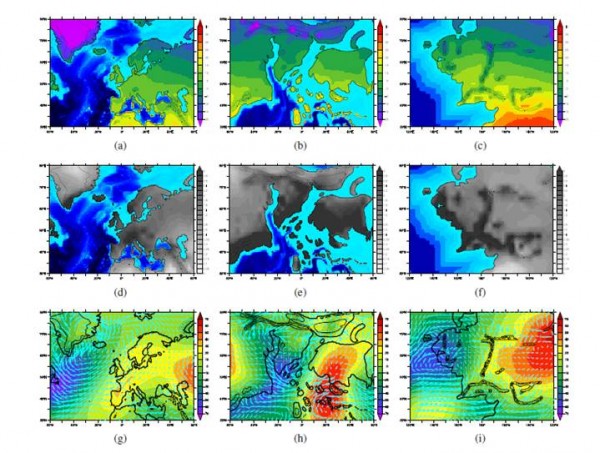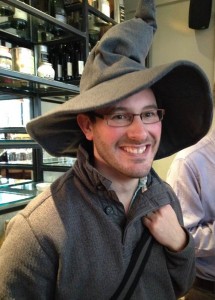10 February 2014
Modelling Middle Earth’s climate: How I borrowed some of Tolkien’s magic for paleoclimate science
Posted by Olivia Ambrogio
By Dan Lunt
Much of my ‘normal’ research work as a climate modeler with the University of Bristol’s Cabot Institute involves setting up computer models to simulate Earth’s past climate (‘palaeoclimate’) which can inform our understanding and predictions of future climate. As such, it was not such a great leap to consider simulating imaginary worlds, and being a J.R.R. Tolkien fan made Middle Earth – the fictional setting of some of Tolkien’s books – an obvious choice.
Initially, I imagined that I would just post a few images of the Middle Earth climate model results on the University webpage, accompanied with some brief explanations of the connection to our palaeoclimate work. However, I soon realised that this could be a really effective way of communicating our science to a wide audience, and therefore spent some time writing a mock-scientific paper explaining the Middle Earth simulations, and our paleoclimate work, for a general audience. In December, we distributed the paper with a University of Bristol press release.
This turned out to be great fun to carry out and write up, and also very rewarding when it was received so well by the media (e.g. The Guardian, Scientific American, and PBS), general public (via Twitter and Facebook), Tolkien fans, and even some of my climate-science colleagues! Nearly all the media outlets covering the story also included text on our palaeoclimate work, which made me feel that the exercise was a success.
I think it was popular partly because of the appealing concept, but largely thanks to some really useful comments on an early draft of the paper provided by some non-scientist friends and family, which made it much more readable and accessible. In addition, I think it took off because of a few key things: (1) Finding real-world locations with similar climates to regions of Middle Earth (e.g. Los Angeles = Mordor; Lincolnshire, UK = The Shire) proved popular with the media, (2) Providing translations in dwarvish and elvish scripts appealed to the Tolkien fans, (3) Using the voice of the wizard ‘Radagast the Brown’ as the author made it a quirky and memorable, and (4) Noting that the work was unfunded and that I did the work in my spare time seemed to placate the minority who might otherwise have considered the exercise a waste of time!
We have previously carried out some work on communicating science to the general public, including writing an introductory paper for a general audience on how past climates can inform future climate change, which is part of a Special Issue of the Royal Society on the same topic. All these engagement activities have been very rewarding and great fun, and I am sure that we will continue to carry out similar activities in the future.

Contours of annual-average modelled temperature (top), precipitation (middle), and surface winds and
mid-atmosphere pressure in Western Europe (left), the Cretaceous North Atlantic (middle), and Middle Earth (right). For units and more details, see http://www.bristol.ac.uk/university/media/press/10013-english.pdf.
—Dan Lunt is a climate scientist in the Cabot Institute at the University of Bristol.











 The Plainspoken Scientist is the science communication blog of AGU’s Sharing Science program. With this blog, we wish to showcase creative and effective science communication via multiple mediums and modes.
The Plainspoken Scientist is the science communication blog of AGU’s Sharing Science program. With this blog, we wish to showcase creative and effective science communication via multiple mediums and modes.
This is fantastic! I love it! Any chance you can tackle those long winters in “Game of Thrones” next? 🙂
Wow! Great post but the end is a bit unclear.